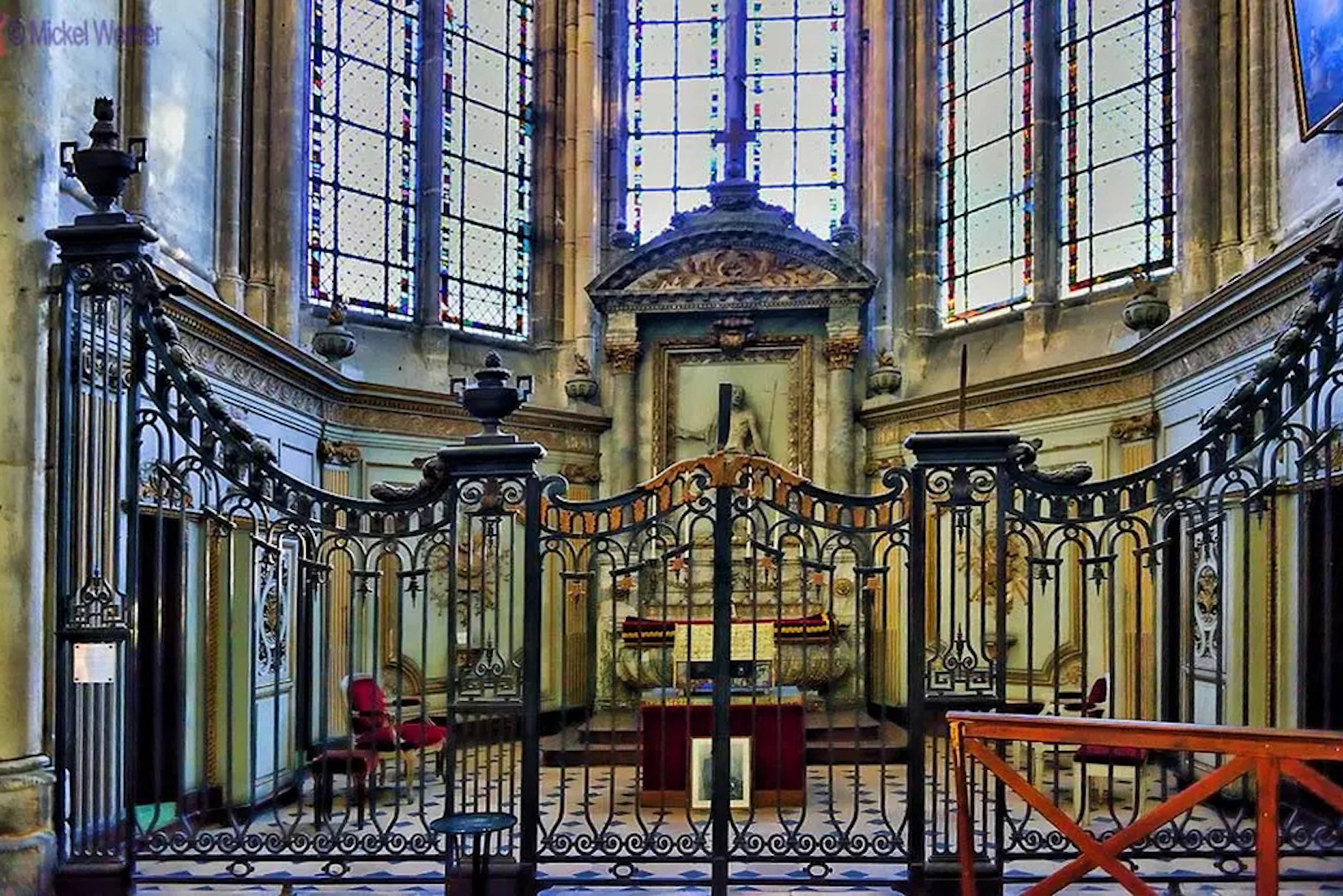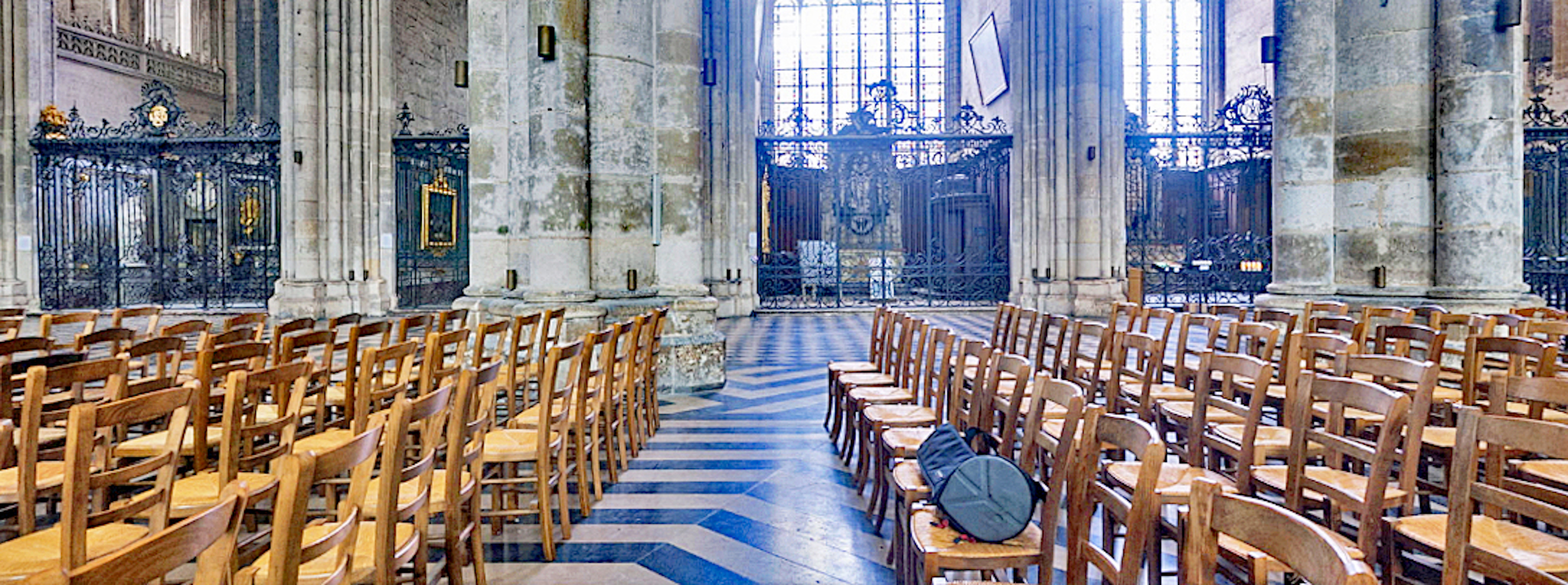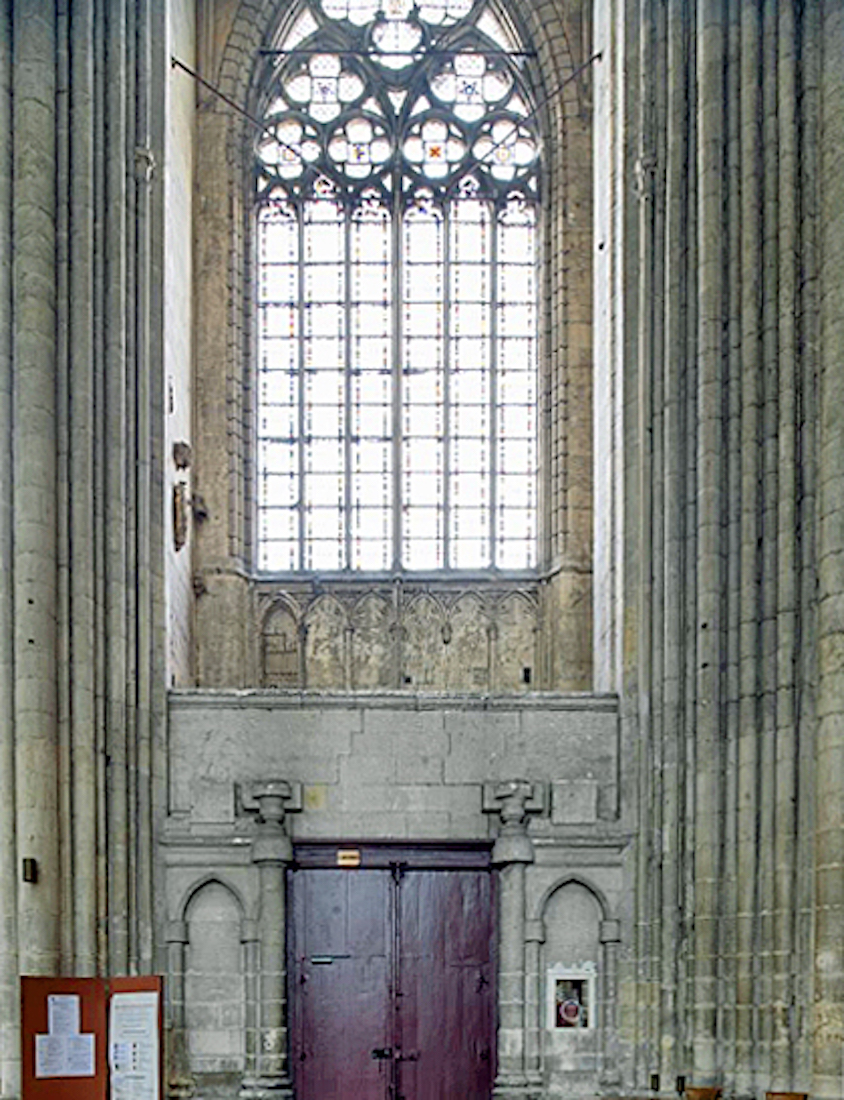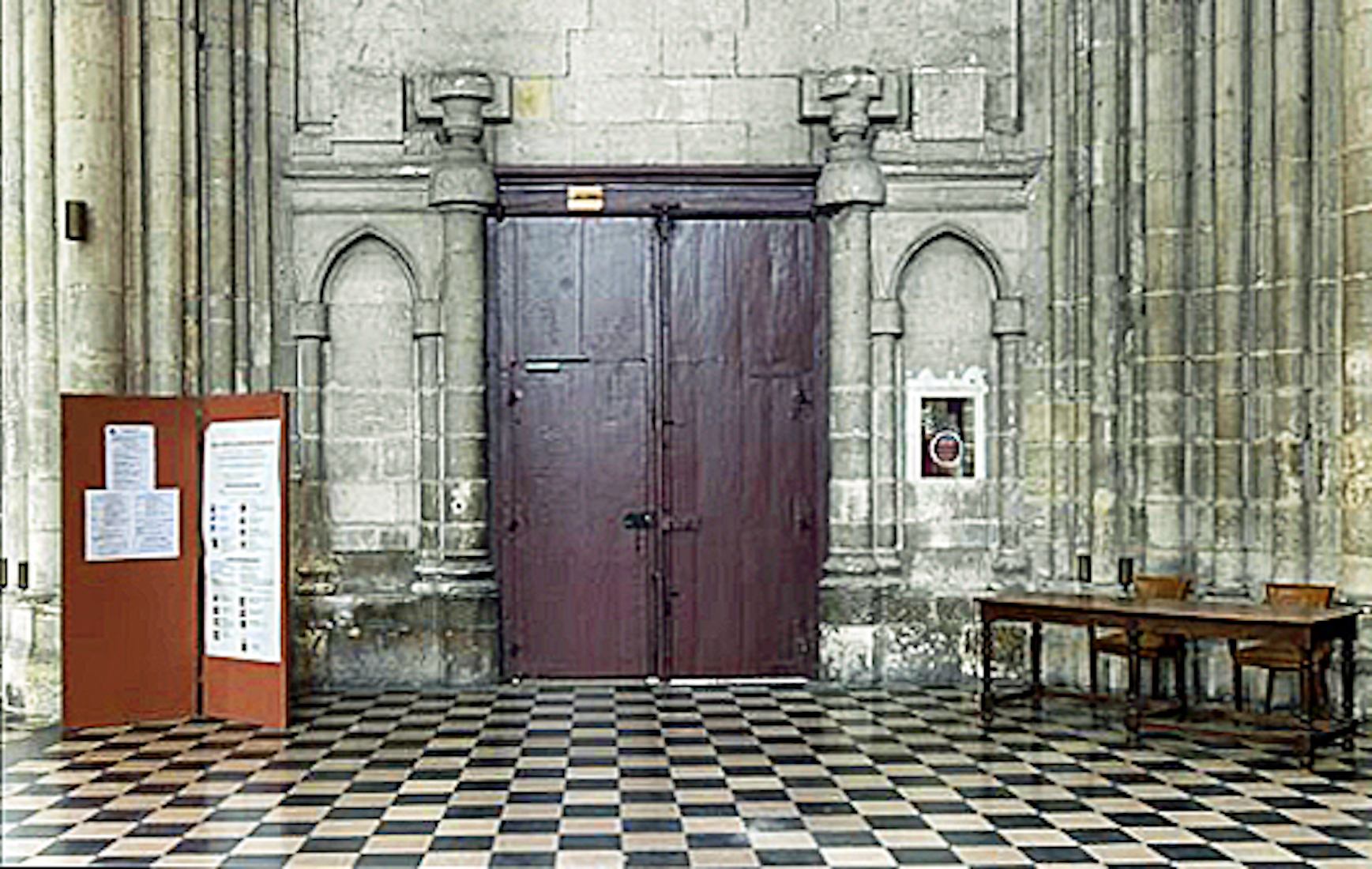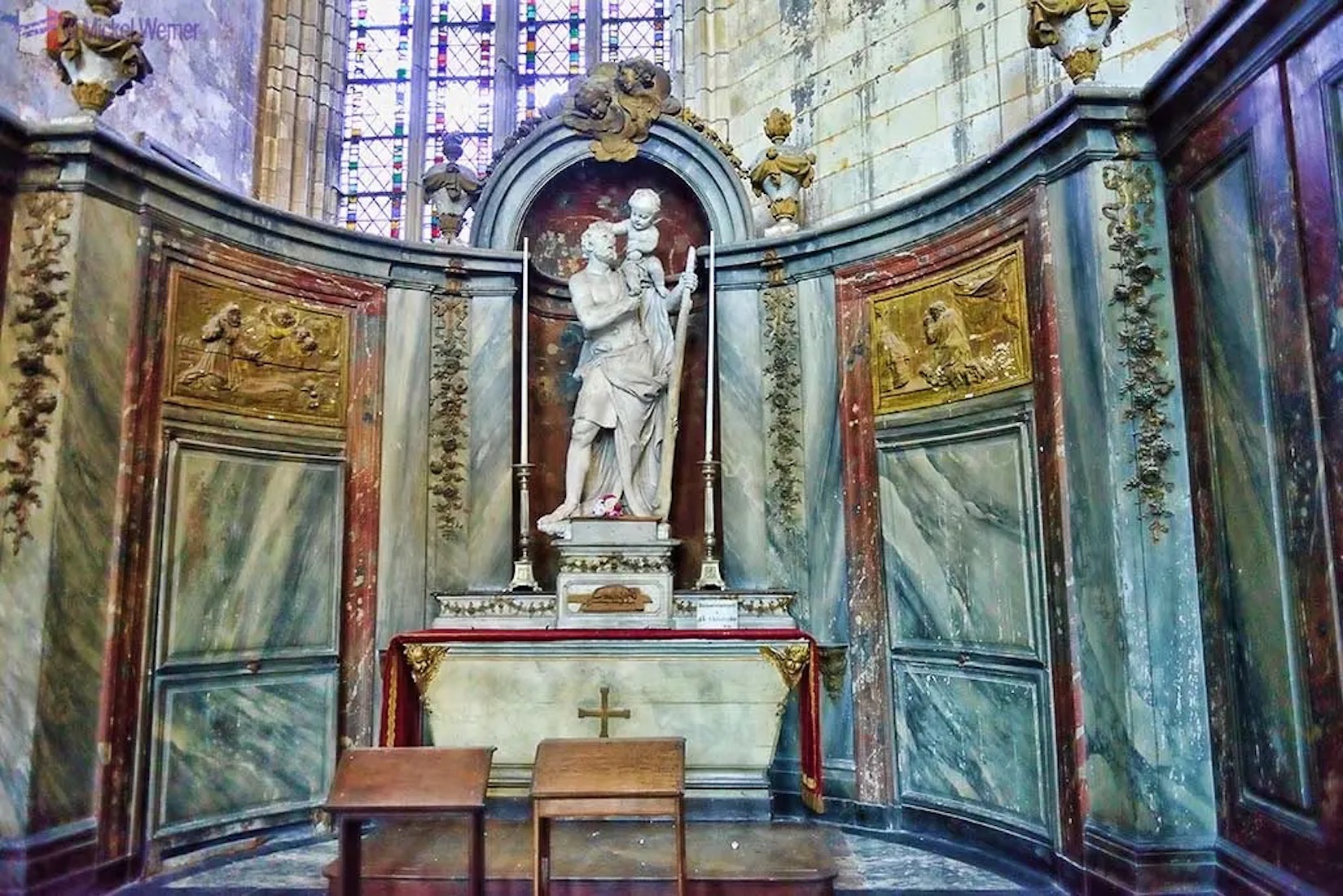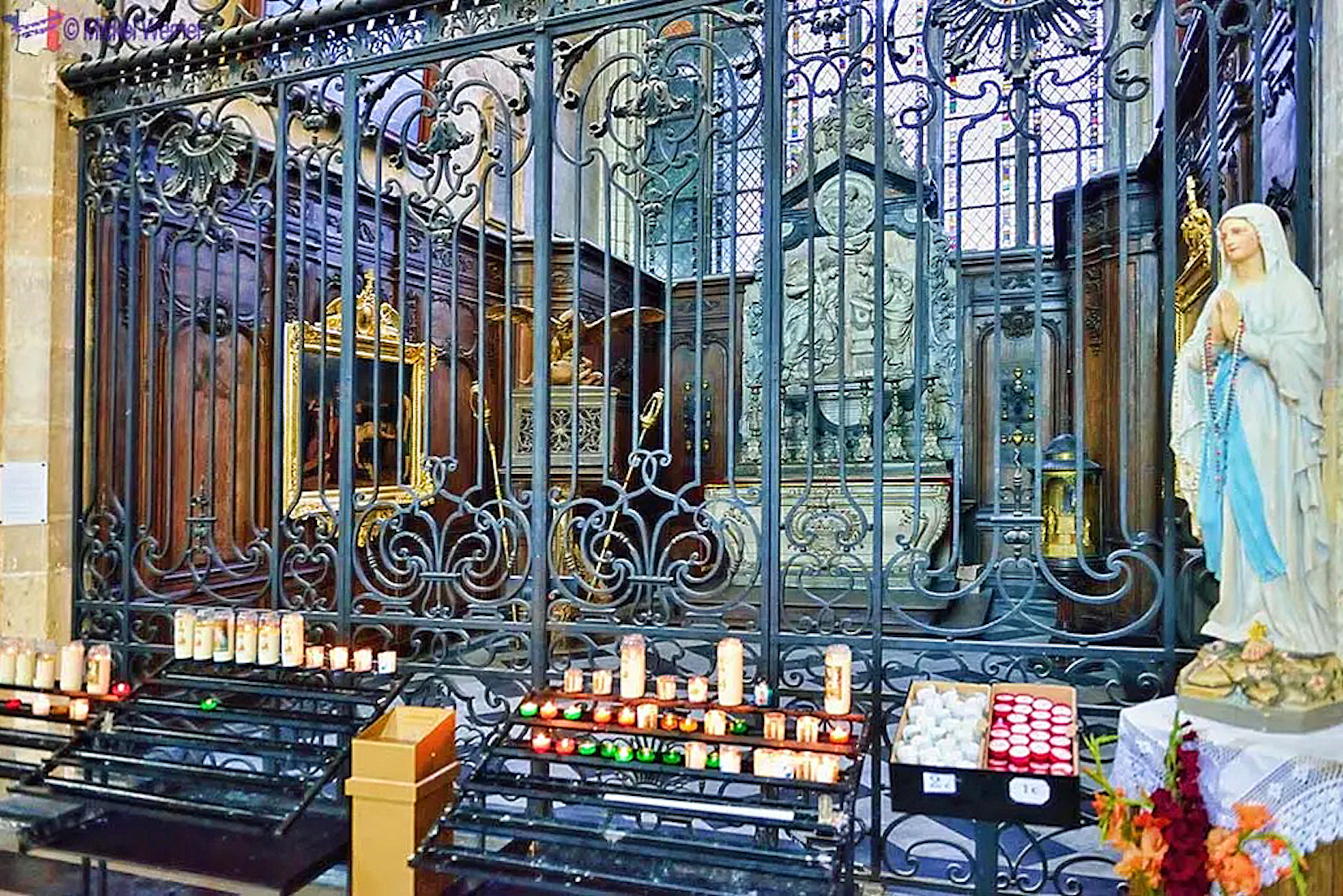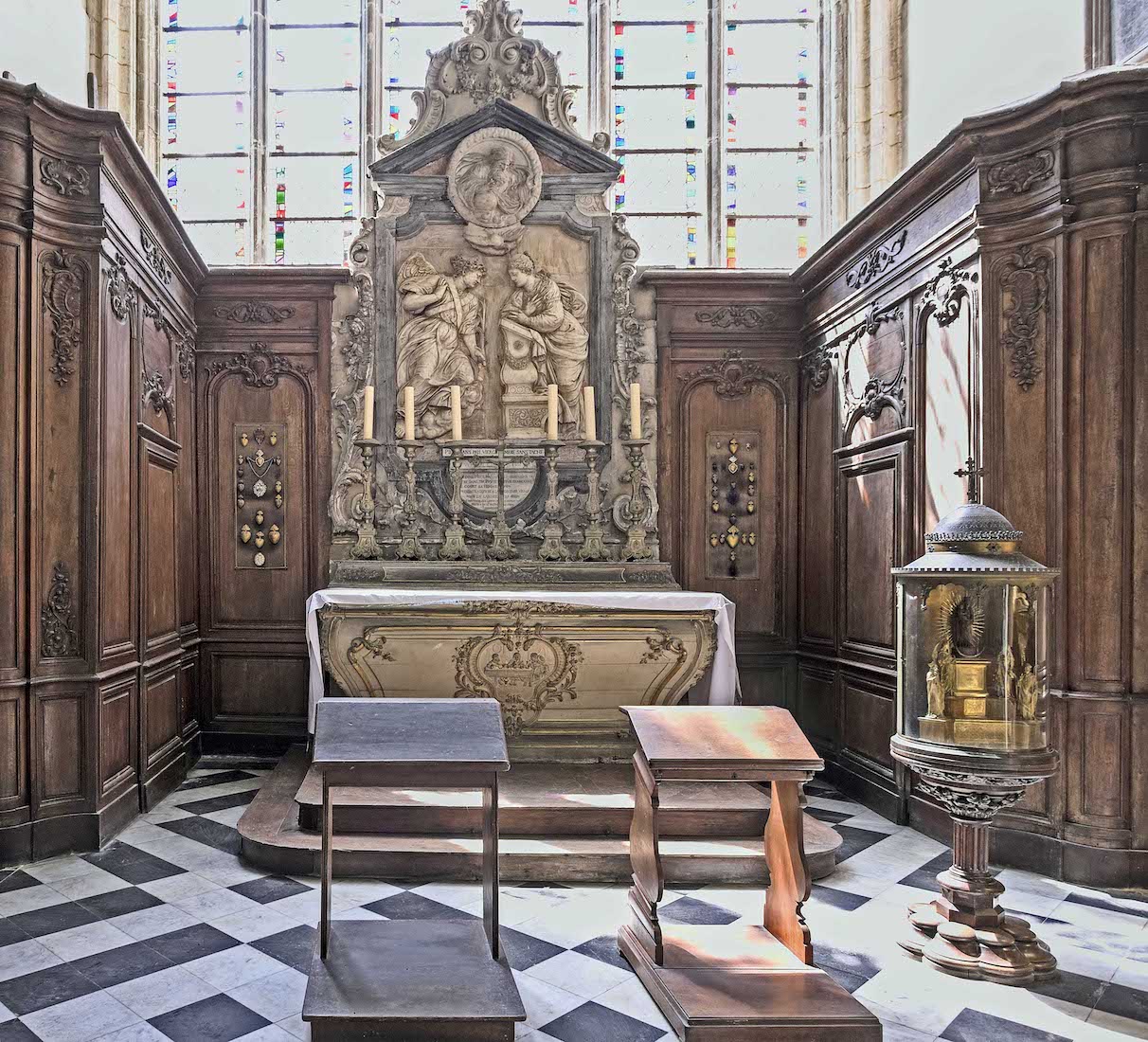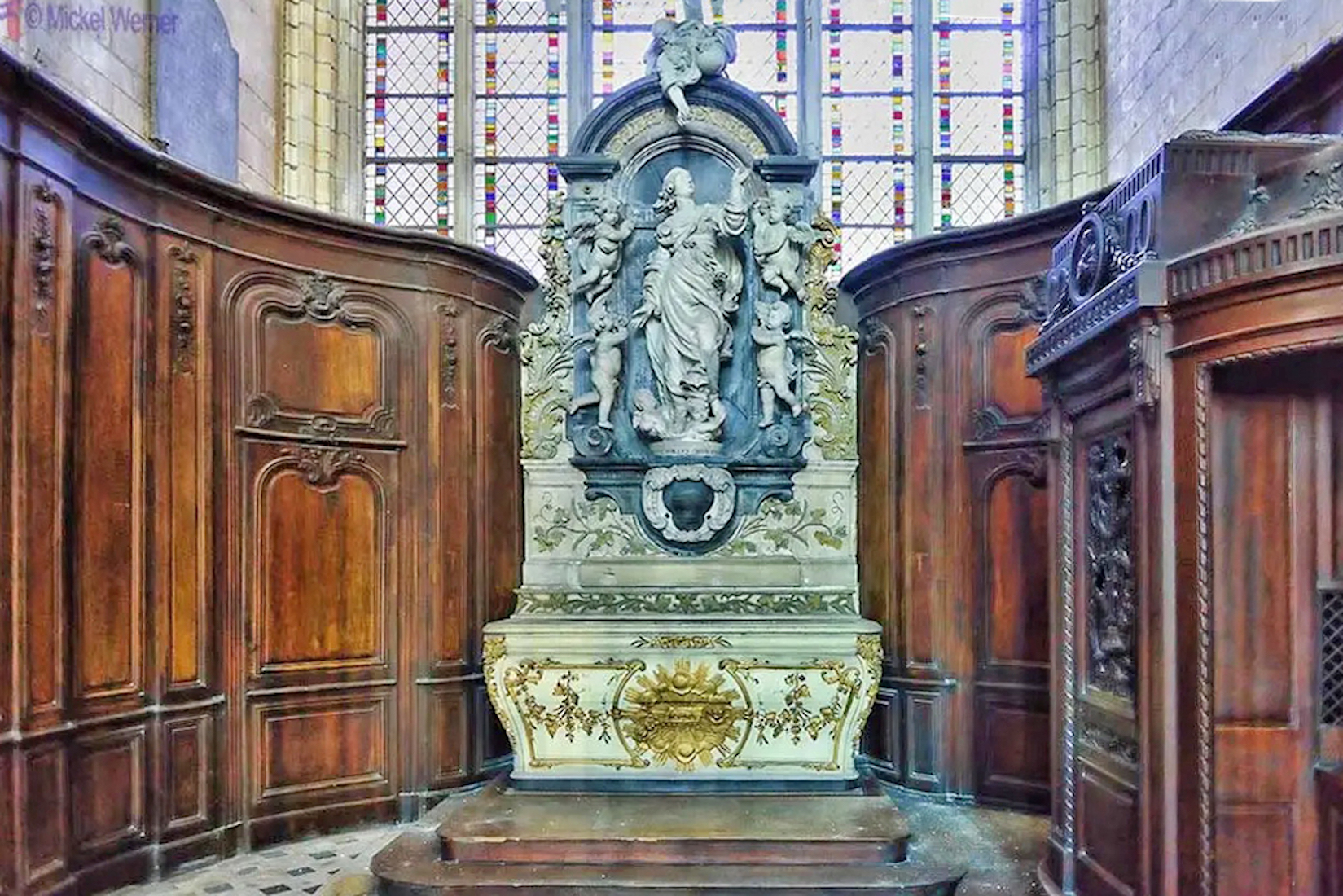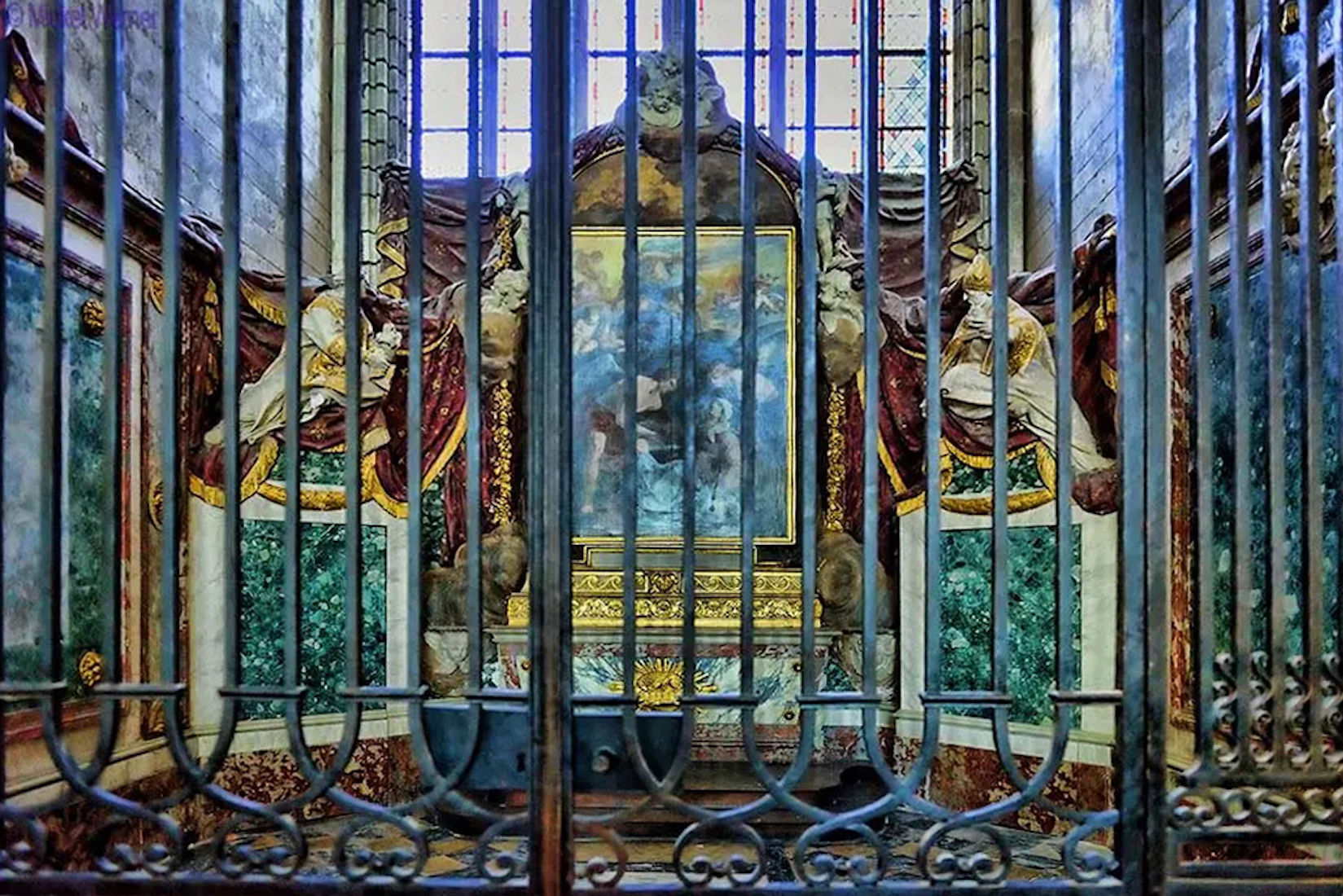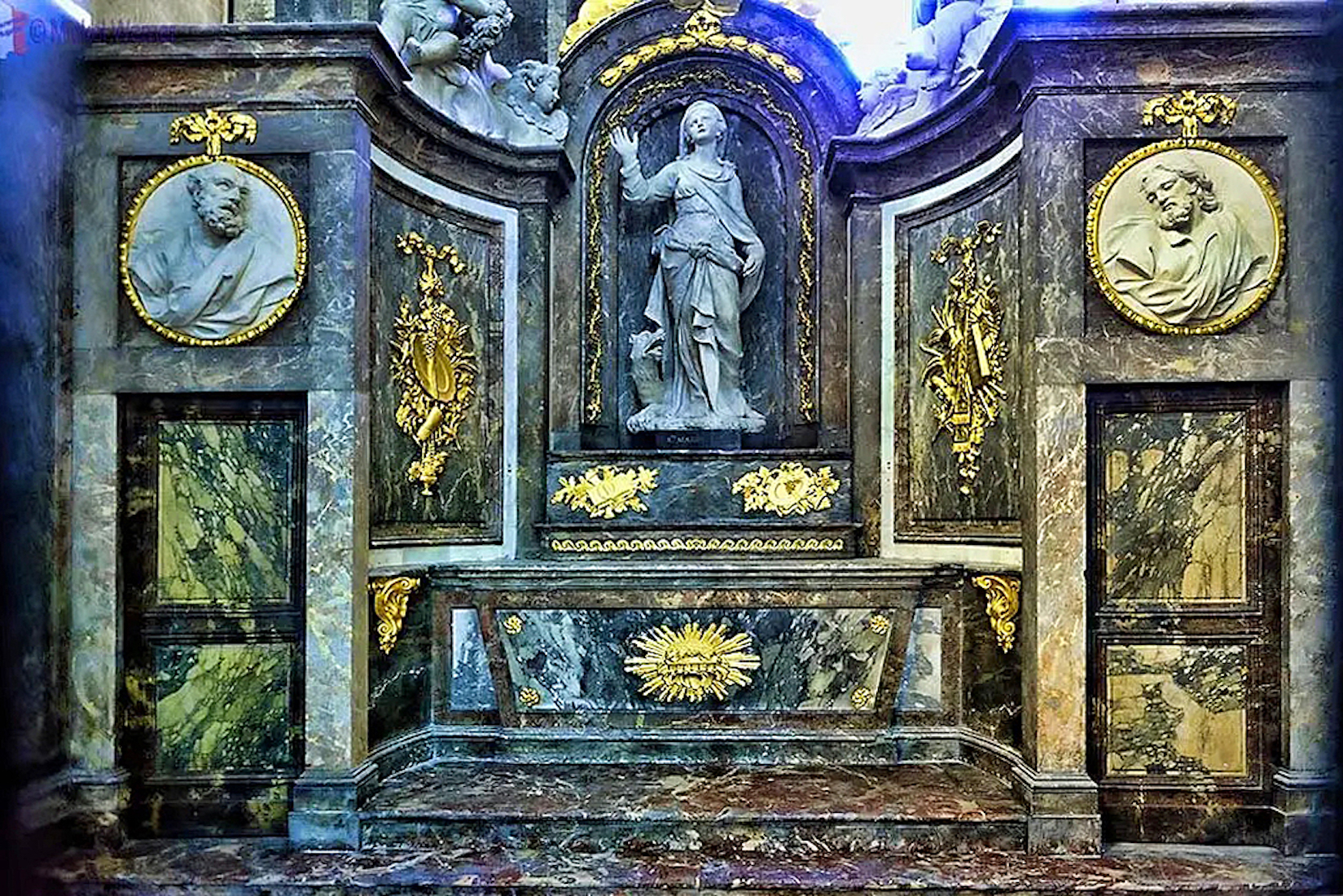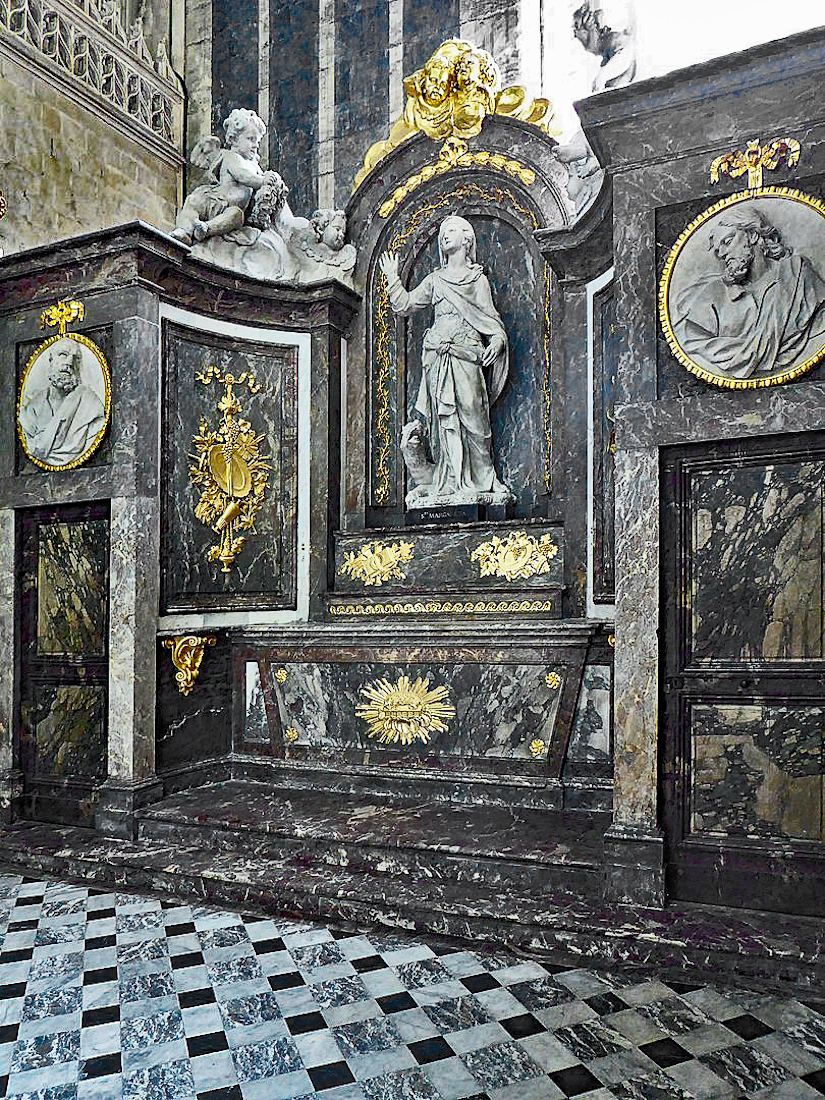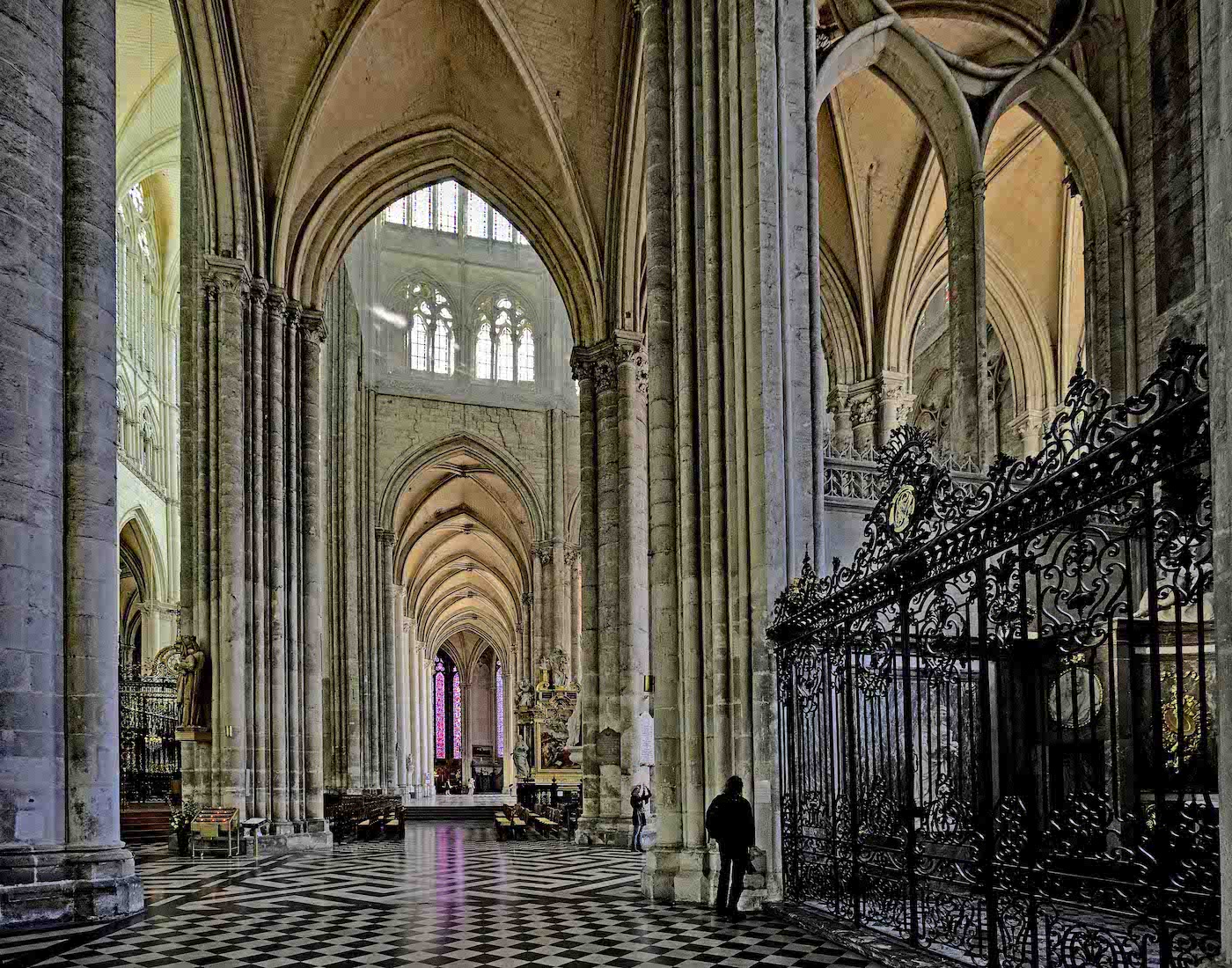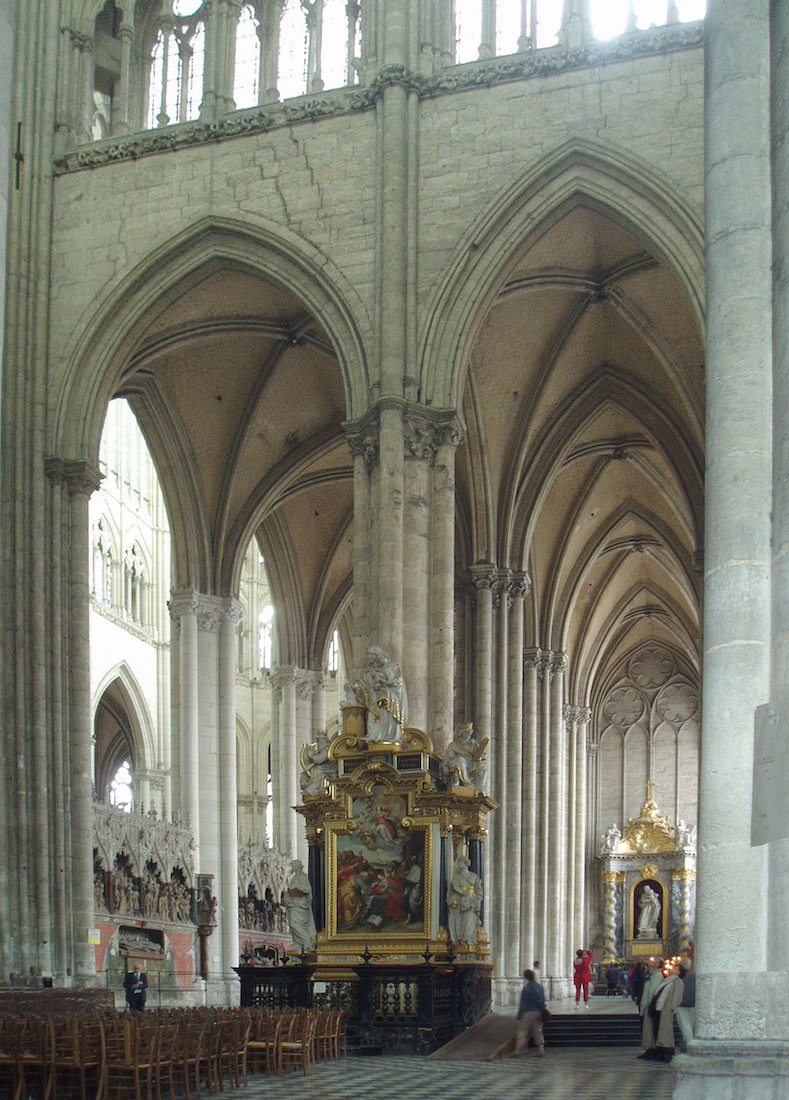N21. ST MICHAEL’S CHAPEL MW WC
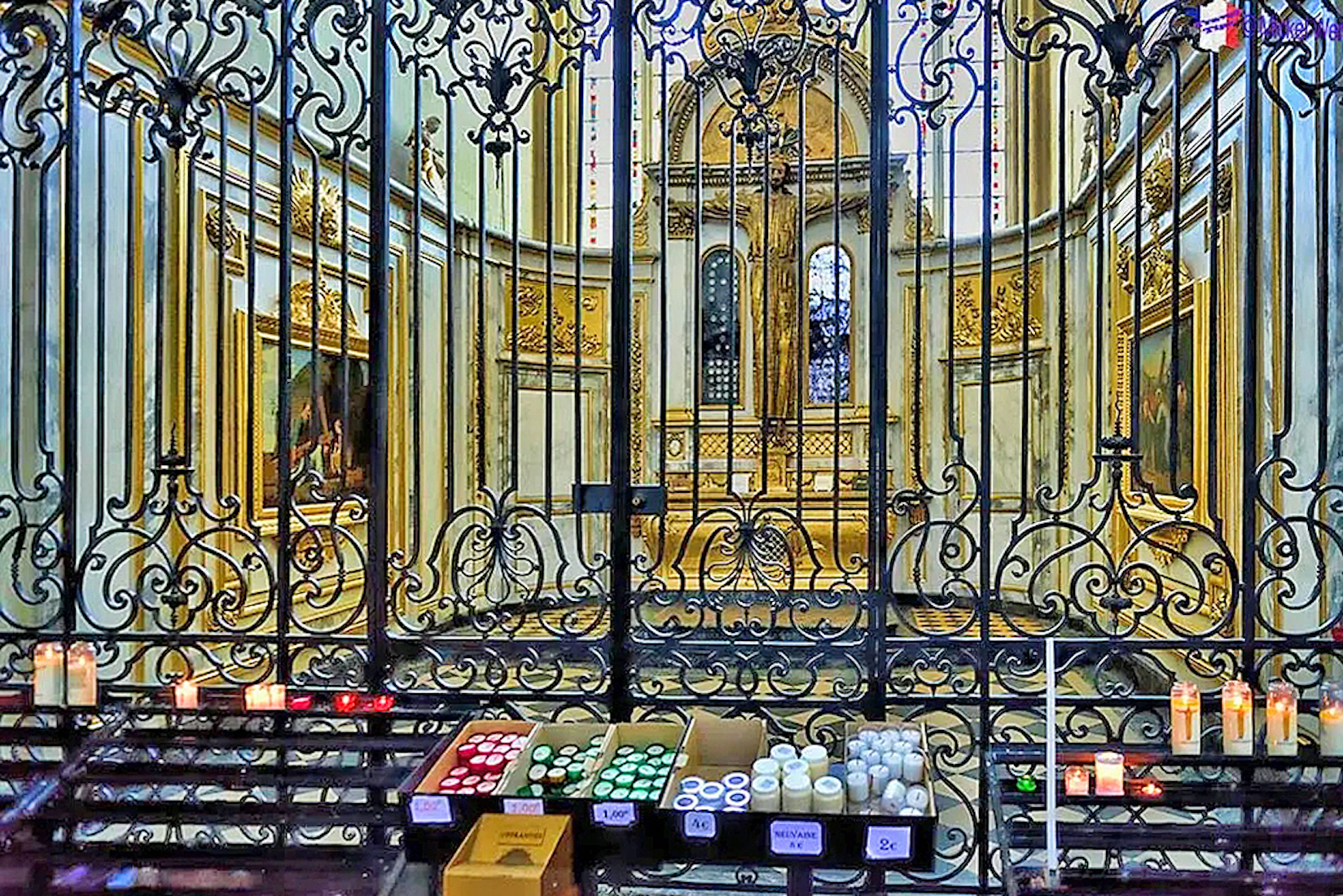
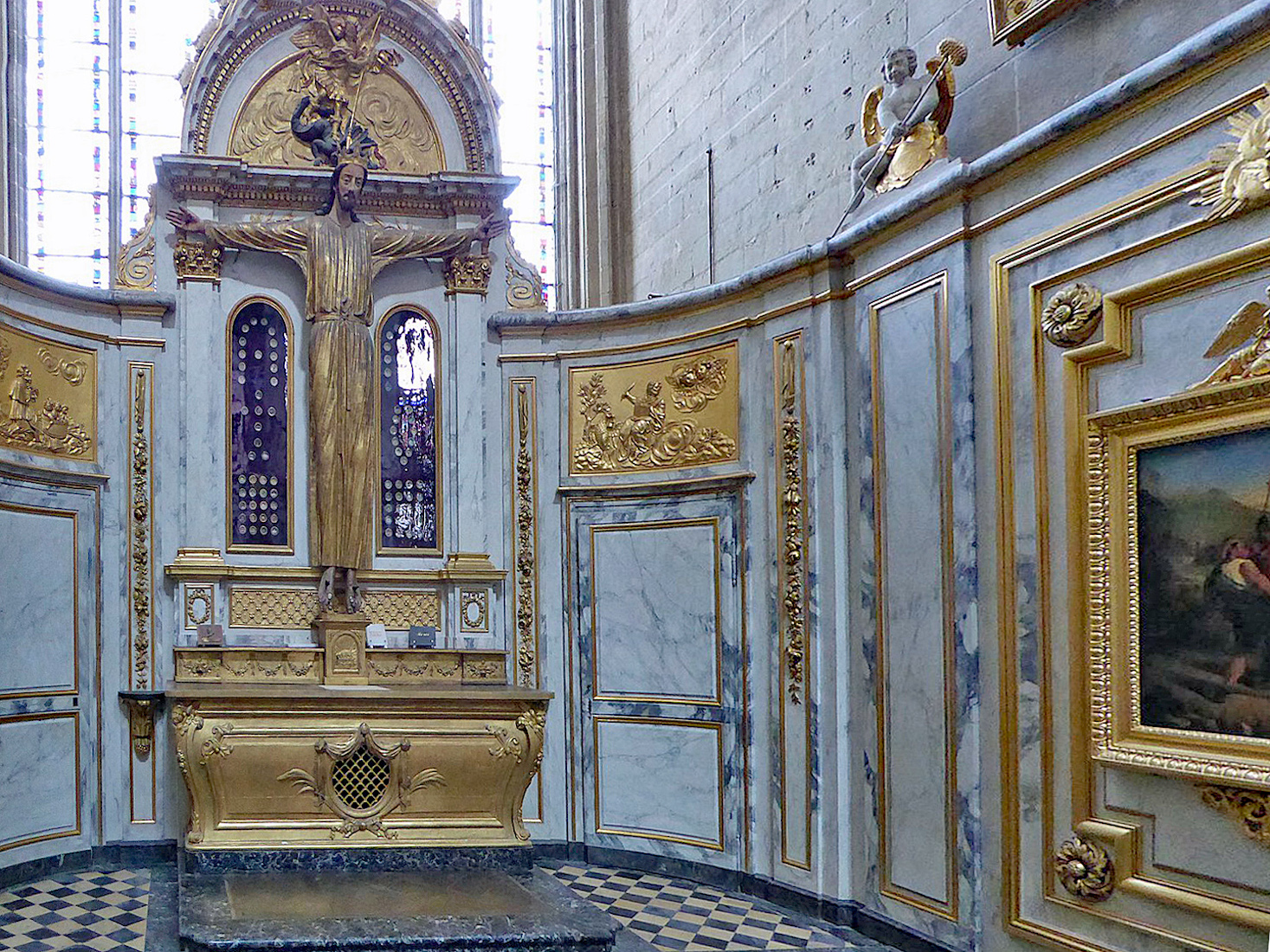
The original Chapel of St Michael is now called the Chapel of St Suave. The oldest documentary evidence about the chapel dates from1389, but the chapel is earlier. The Chapel has a lierne vault and Y tracery – probably c1330s (not shown). It is likely that the tomb contains the remains of the count of Amiens Angilguinus and his wife Rumildis – 9th century benefactors of the cathedral. St Sauve was a monk and then a bishop of Amiens in the 7th century. Catholic tradition makes him the discoverer of the body of Firmin of Amiens. [Photo2 Credit: Wikimedia Commons Pierre Andre LeClercq] INDEX
N22. ST JOHN THE EVANGELIST’S CHAPEL MW
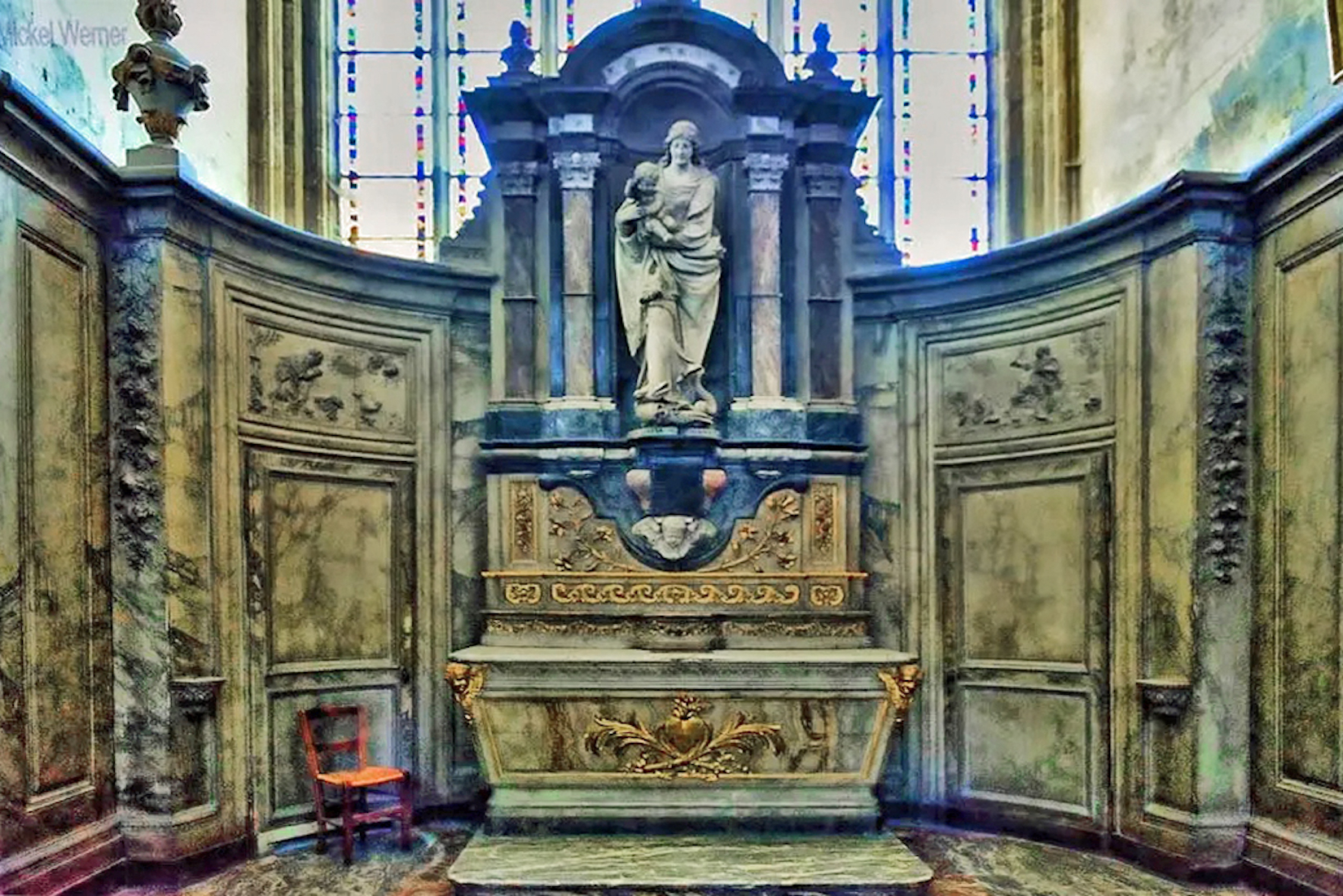
Jean de la Grange (1373–5) succeeded Jean de Cherchemont as bishop. De la Grange, born of a noble Beaujolais family played a key role in the court of Charles V. From 1357 Jean was abbot of the Normandy commune Fécamp. In 1370 he became president of the ‘court of aides’ and superintendant of finances. He was preceptor of Charles V’s children Charles VI and Louis, duke of Orléans. He became cardinal and joined the papal court at Avignon. Two sumptuous mausolea were erected for him, one in St Martial of Avignon and the other in Amiens Cathedral. In 1373–5 while bishop of Amiens, he began the Westernmost two chapels on the North side of the nave, and dedicated both to his two patron saints. The chapels date from c1375.
N23. ST JOHN THE BAPTIST’S CHAPEL MW
As in #22, the chapel of St. John the Baptist was built in 1375 by the Bishop-Cardinal Jean de La Grange. Above the altar is a statue of St John the Baptist.
N24. SOUTH NAVE
We next turn our attention to the side chapels of the South nave, beginning at the Western end. There are six more of these. [Photo Credit: taken from Video]
N25. ST LAMBERT’S CHAPEL MW MW
This Westernmost Chapel of St Lambert is curious because it is a through-way to the Southwestern side portal, which is named for St Christopher. It is also curious because there is an upstairs chapel over this vaulted porch. Statues of Lambert, bishop of Maastricht, and Pepin once flanked the portal! They may return. The chapel is difficult to date: the pattern of the window tracery matches the second chapel on the South side (Saint Etienne, early 1300s). but has been updated, probably in the middle decades of the fourteenth century.
N26. ST CHRISTOPHER’S CHAPEL MW
St Christopher is the Patron Saint of Pilgrims. The statue behind the altar shows St Christopher carrying the Christ-Child across a river. •• On October 19 1390 Enguerrin d’Eudin, wealthy citizen of Amiens (Durand says: chevalier, chambellan du Roi and governor of Dauphiné) gave 2,000 golden francs to found a daily requiem mass in the Chapel of Saint Christopher. D’Eudin was represented in the window. In 1358 in return for an English prisoner he had handed over to the king, Enguerrin d'Eudin received a large share of the goods which the king had confiscated from the alderman Jacques de Saint‐Fuscien who had been convicted of treason and beheaded. Perhaps this was the money used to build the chapel in c1370.
N27. JARDINET CHAPEL MW CD
The third chapel from the West end is the Jardinet Chapel. The name means ‘little garden’ and is an allusion to the Song of Songs. It is also called The Chapel of Annunciation. The chapel was consecrated in 1378 or 1383. It is now called Notre-Dame de Foi (Faith). It has a more complex vault with liernes and tiercerons and seems to belong to the middle years of the 14th century. The exterior statues of Raphael and Michael and Annunciation are similar in style to Virgin given by Jeanne d'Evreux to S-Denis 1339. This was the chapel of the confraternity of the Annonciation-Notre-Dame (1378).
N28. ST NICOLAS CHAPEL MW
Today the Chapel of St Nicolas is known as The Chapel of Incarnation or Assumption. No date is presently known, but similar architectural forms to other chapels place it at around 1300. An exterior inscription indicates that it was built with support of woad merchants: ‘LES BONES GENS DES VILES DENTOUR AMIENS QUI VENDENT WAIDES ONT FAITE CHETE CAPELE DE LEURS OMONNES’. Inside the Chapel are a statue of Saint Nicholas and statues of woad merchants.
N29. ST ÉTIENNE CHAPEL CD
St Étienne is French for St Stephen. The existence of this chapel was not documented until 1427, but the window tracery is same as other early chapels. There were five chaplaincies of St Étienne in the cathedral – no foundation documents have survived.
N30. ST MARGUERITE CHAPEL MW WC
The Eastern-most chapel on the South side of the nave is the St Marguerite Chapel. In 1292 Bishop Guillaume de Mâcon (1278–1308) opened aisle wall at the East end of South aisle to create this chapel for St Marguerite. Margaret of Provence was wife (still living) of Louis IX. The bishop was buried there and gave the window with inscription: ‘Guillelmus Ambianensis episcopus, natione burgundus, fieri me fecit (Bishop Guillelmus Ambianensis, he caused me to become a Burgundian nation)’. His enameled tomb included the depiction of the reception of his soul in the bosom of Abraham. Several images of the bishop were installed – the exterior statue still survives. Guillaume’s 1293 chaplaincy of the commune of Framicourt was transferred to the new chapel. [Photo2 Credit: Wikimedia Commons Pierre Andre LeClercq]
N31. SOUTH NAVE AISLE LOOKING EAST CD
Our exploration now leads us Eastwards to the West aisle of the transepts and crossing. Straight ahead are the steps up to the South ambulatory.
N32. TO THE CROSSING AMT
Here we turn left, trying to avoid this mountain of chairs(!) to reach the central crossing. To help our navigation, we are standing here in the South transept, facing the painting ‘The Assumption of the Virgin’. The ramp and step to the right of the painting lead up to the Chapel of St Peter and St Paul. The aisle to the left of the painting is the South ambulatory. We shall follow up here shortly.


